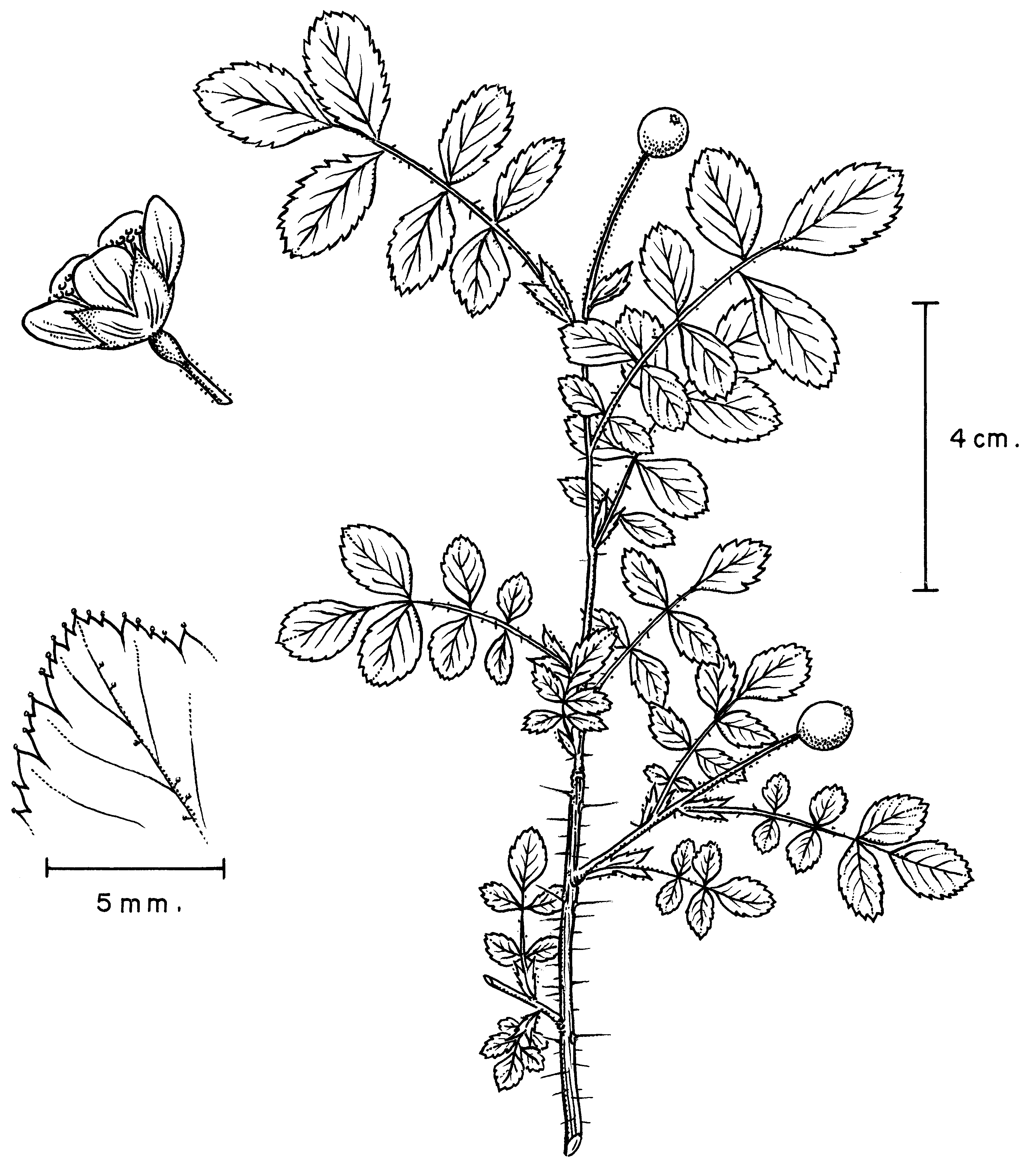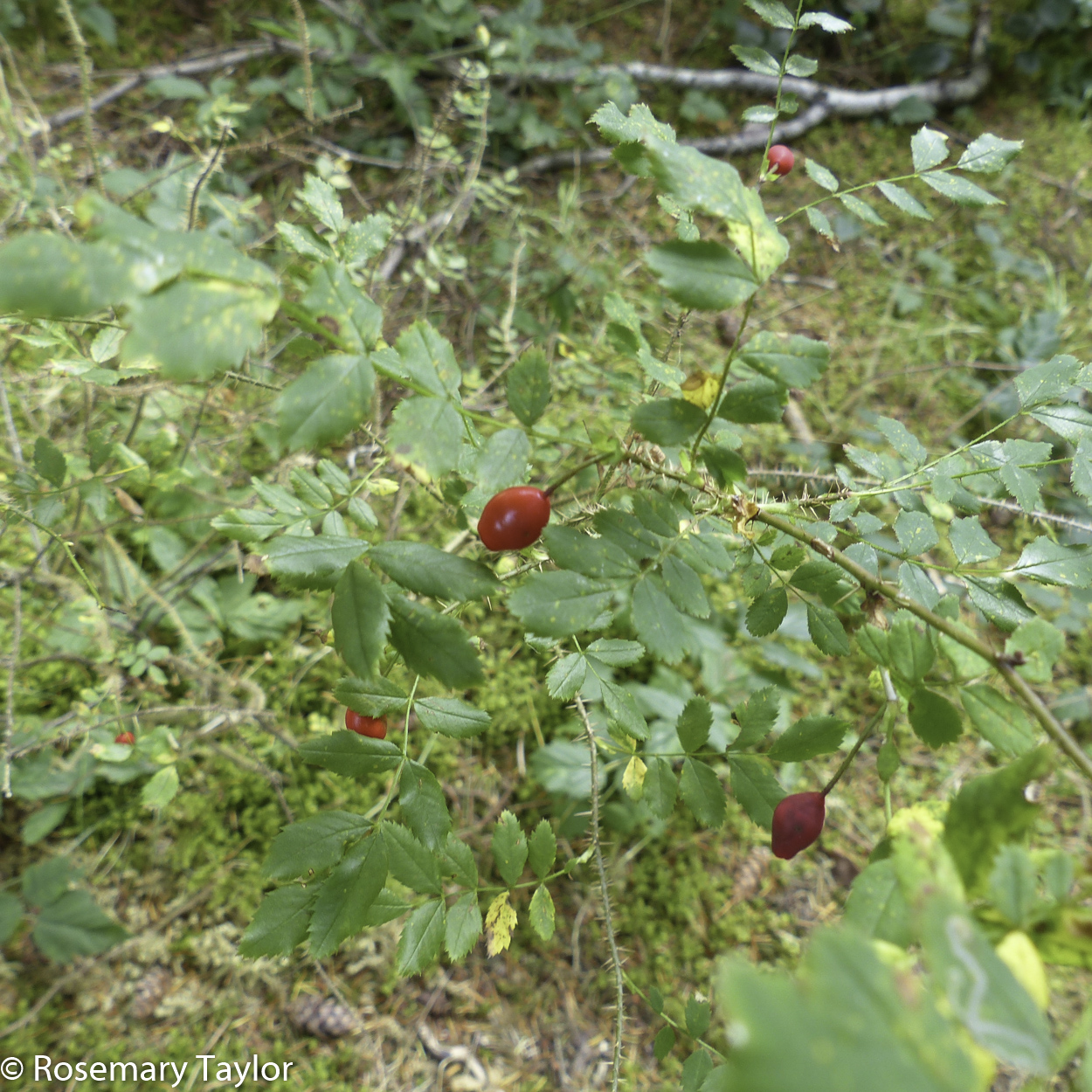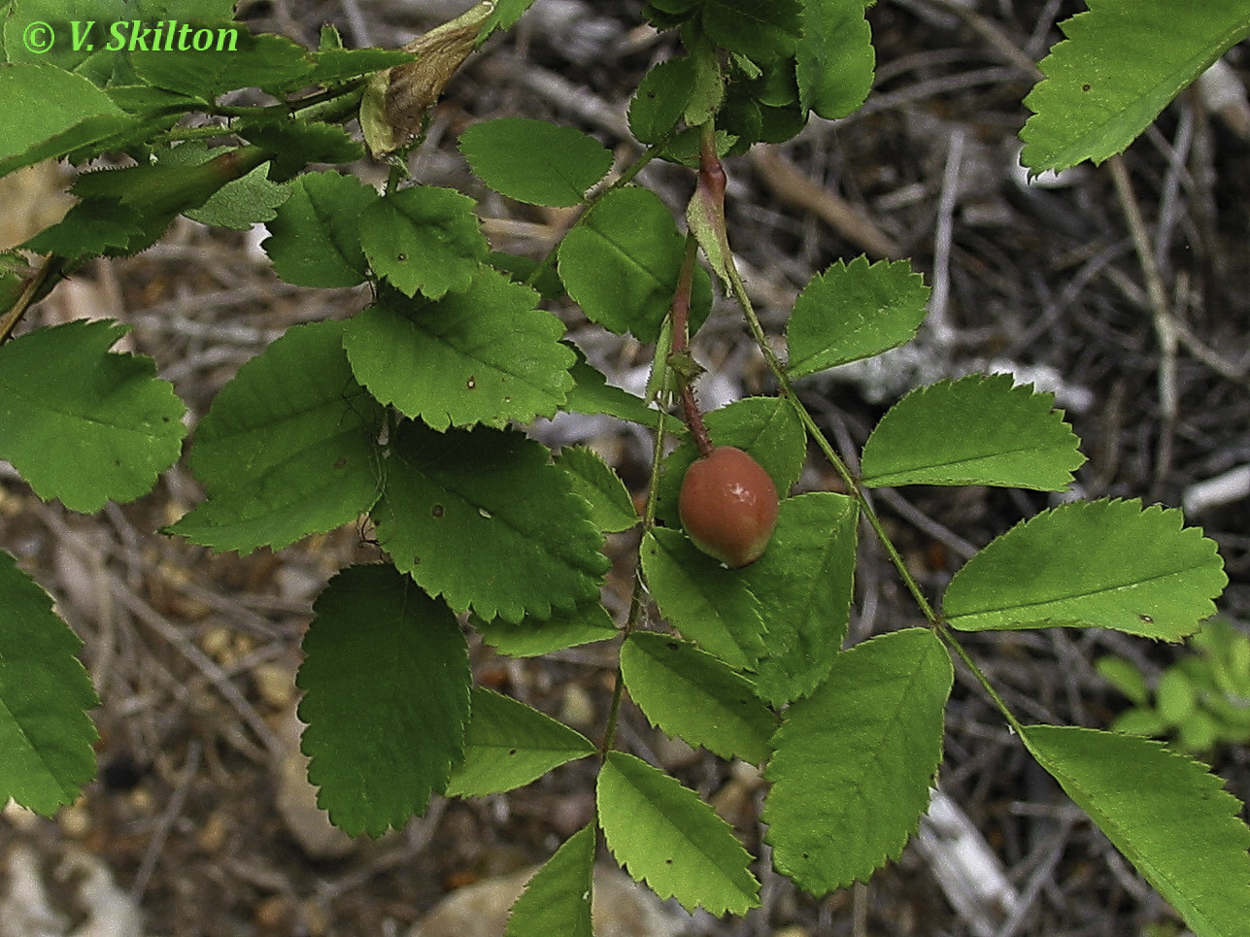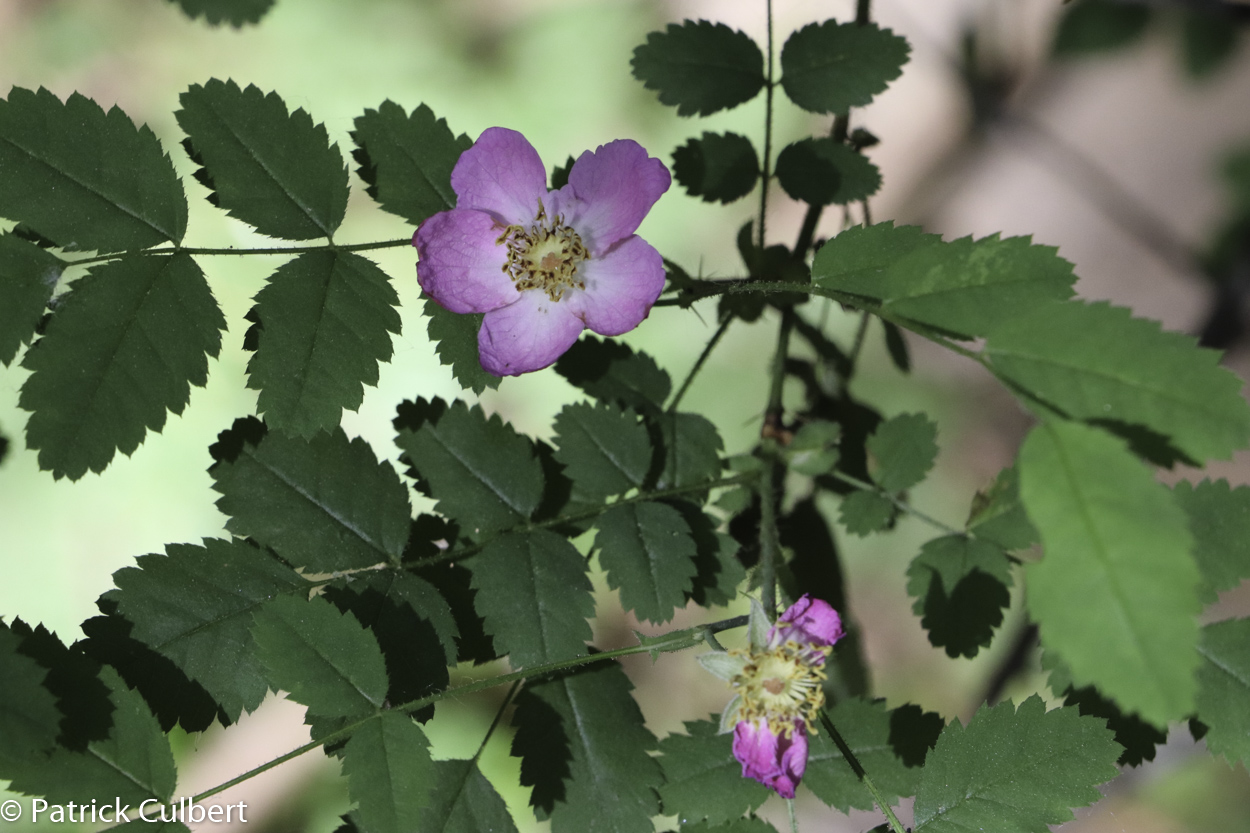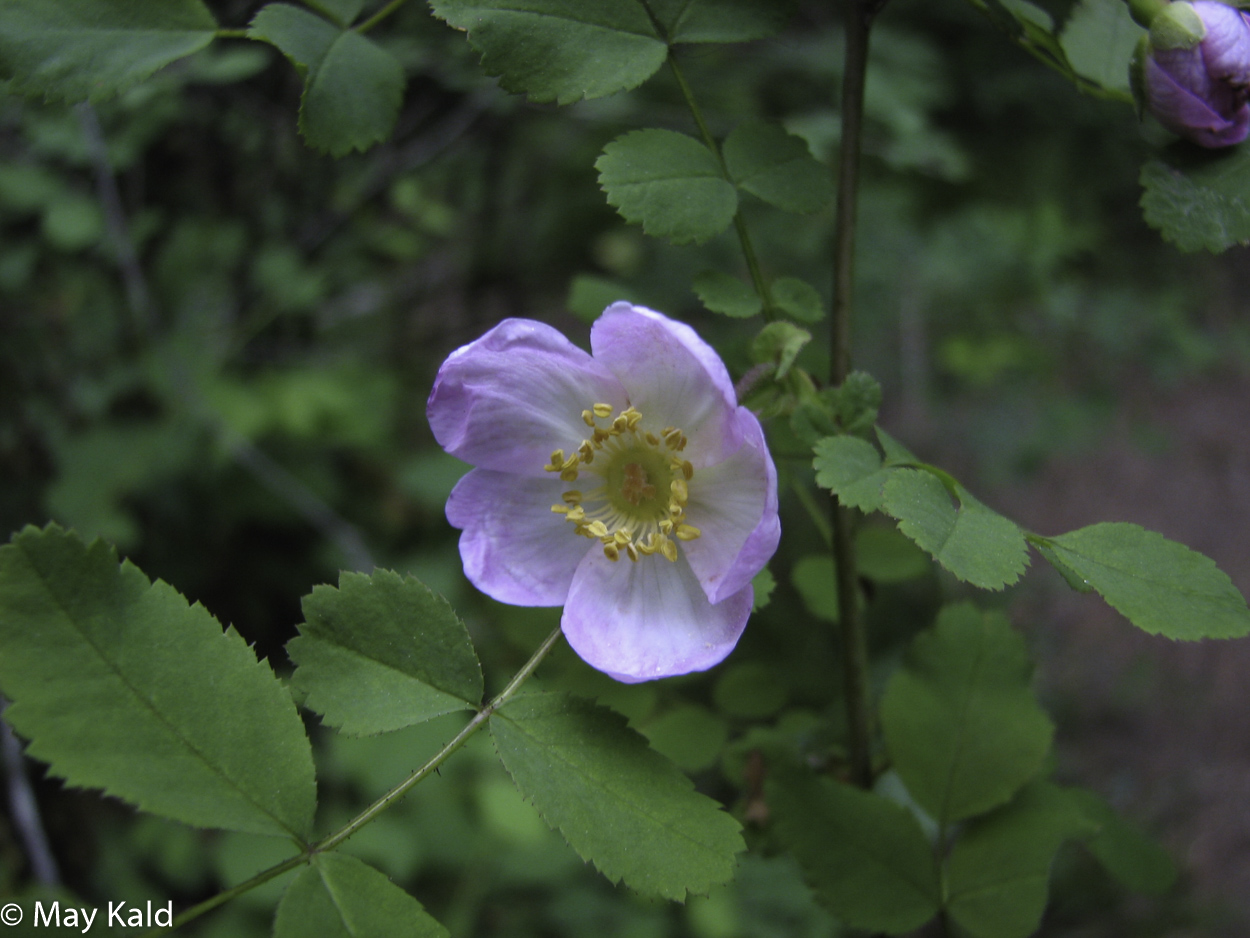Rosa gymnocarpa – baldhip rose
Common Name
baldhip rose
Alternate Common Names
- dwarf rose
Family
Rosaceae
Scientific Name
Rosa gymnocarpa
Soil Moisture Regime (SMR)
- Very Dry (VD)
- Dry (D)
- Moderately Dry (MD)
Soil Nutrient Regime (SNR)
- Medium (M)
Hitchcock, C. Leo, and Arthur Cronquist. Flora of the Pacific Northwest: An Illustrated Manual © 1973. Reprinted with permission of the University of Washington Press.
General / Habitat
- Shrub
- Found in a variety of habitats, from open to wooded and dry to moist
- Low to middle elevations
Key Identifying Characteristics
- Form: Spindly, up to 1.5 m tall
- Other: usually armed with numerous soft, straight prickles, young stems may only be covered with tiny, stalked glands
- Leaves: Alternate, deciduous, compound (usually 5, 7 or 9 per leaf), leaflets toothed and 1-4 cm long
- Flowers: pale pink, small (1-2 cm), 5 petals, stamens crowded and numerous, usually borne singly near branch tips
- Fruit: orange to red, pear-shaped rose hips that nearly always lack distinctive crown of dried sepals
Lookalikes
- If fruits are unavailable, I think the best way to confirm baldhip rose is to feel the prickles, which should be soft and bend to the (cautious!) touch. A less potentially dangerous way is to look for curved prickles (likely an introduced variety) or large prickles only present at leaf nodes (Rosa nutkana) , but Rosa gymnocarpa can be difficult to distinguish from Rosa acicularis where their ranges overlap without feeling the prickles
Interesting Characteristics
- Most parts of the plant were used by a variety of aboriginal coastal groups:
- young leaves and twigs were brewed into tea
- stems were used during ritual dances
- leaves and bark were dried and smoked
- hips were eaten occasionally as a famine food
External References
Sources
Douglas, G.W. et al (Editors). 1998-2002. Illustrated Flora of British Columbia, Volumes 1 to 8. B.C. Min. Environ., Lands and Parks, and B.C. Min. For., Victoria, B.C.
Pojar, J. and A. MacKinnon. 2014. Plants of Coastal British Columbia Including Washington, Oregon & Alaska. B.C. Ministry of Forestry and Lone Pine Publishing. Vancouver, B.C.

